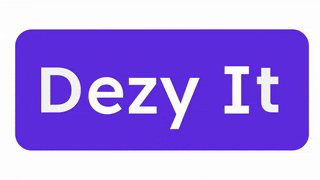From ELIZA to Today's Chatbots: A History of Conversational AI in Healthcare Administration
- purvasha
- Jan 3
- 3 min read
Conversational AI, the technology that enables human-like interactions between computers and humans, is rapidly transforming healthcare administration. But this isn't a sudden development. Its roots trace back decades, with key milestones shaping its current capabilities and future potential. This blog post explores the history of conversational AI in healthcare administration, providing context for clinic owners, managers, and investors looking to understand this powerful technology.

The Early Days: Rule-Based Systems and ELIZA (1960s)
The seeds of conversational AI were sown in the mid-20th century with the emergence of artificial intelligence as a field. One of the earliest examples was ELIZA, a natural language processing program developed at MIT in the 1960s. While not truly "intelligent," ELIZA simulated conversation by using pattern matching and substitution methodologies. It could respond to user input with seemingly relevant replies, creating the illusion of understanding. Although ELIZA wasn't specifically designed for healthcare administration, it laid the groundwork for future conversational systems.
Early Healthcare Applications (1970s-1990s): Limited but Promising
Early applications of AI in healthcare focused primarily on diagnostic systems and expert systems designed to assist physicians. Administrative uses were limited due to technological constraints. However, some initial attempts were made to automate tasks like appointment reminders and basic information dissemination using simpler rule-based systems. These systems lacked the sophistication of modern AI, but they demonstrated the potential for automation in healthcare administration.
The Rise of the Internet and Expert Systems (1990s-2000s):
The rise of the internet and advancements in computing power paved the way for more complex AI systems. Expert systems, designed to mimic the decision-making of human experts, began to emerge in healthcare. While not strictly "conversational," these systems could provide rule-based advice and support for administrative tasks, such as insurance claims processing.
The Machine Learning Revolution (2010s-Present):
The advent of machine learning, particularly deep learning, has revolutionized conversational AI. This approach allows AI systems to learn from vast amounts of data, improving their ability to understand and respond to natural language. This has led to the development of sophisticated chatbots and virtual assistants capable of handling complex conversations and providing personalized support.
Modern Applications in Healthcare Administration:
Today, conversational AI is used in a variety of administrative functions in healthcare:
Appointment Scheduling and Reminders: AI-powered chatbots can schedule appointments, send reminders, and manage cancellations, reducing administrative burden and improving patient adherence.
Patient Inquiries and Support: Chatbots can answer FAQs, provide information about clinic services, and offer basic health advice.
Insurance Verification and Billing: AI can assist with insurance verification, claims processing, and billing inquiries, streamlining revenue cycle management.
The Future of Conversational AI in Healthcare Administration:
The future of conversational AI in healthcare administration is promising. As technology continues to evolve, we can expect to see even more sophisticated applications, including:
Personalized Patient Communication: AI can tailor communication to individual patient needs and preferences.
Proactive Patient Outreach: AI can proactively reach out to patients for follow-up care or preventive screenings.
Integration with Wearable Devices and Remote Monitoring: AI can integrate with wearable devices to monitor patient health and provide timely interventions.
Conclusion:
From its humble beginnings with ELIZA to today's sophisticated chatbots, conversational AI has come a long way in transforming healthcare administration. By understanding its historical evolution, clinic owners, managers, and investors can better appreciate the potential of this technology to improve efficiency, enhance patient experiences, and drive innovation in the healthcare industry.


Comments